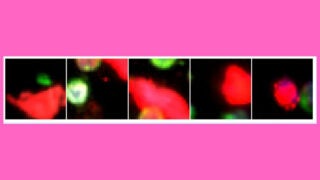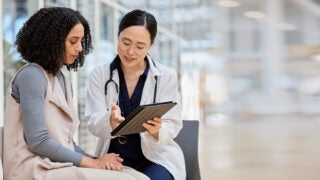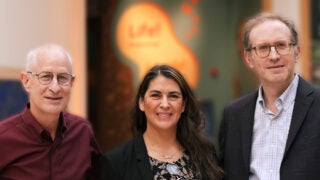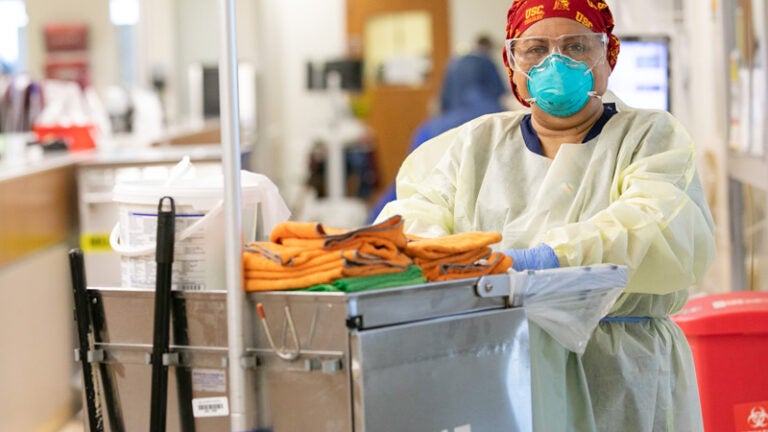
(Photo/Ricardo Carrasco III)
USC’s Unsung Heroes of the Pandemic
They disinfect hospital rooms and feed neighbors in need. These members of the Trojan Family take action in times of crisis.
You don’t have to make the headlines to be a hero. During the coronavirus pandemic, USC everyday heroes worked behind the scenes to keep their communities safe and spread the Trojan love. They even shared the ultimate source of comfort: macaroni and cheese.
Here are some of their stories.
The Compassionate Cleaner
Patients might not see Maria Saravia’s smile behind her mask, but it’s there. Saravia visits the rooms of Keck Hospital of USC’s COVID-19 patients to sanitize surfaces, remove trash and hazardous waste and freshen bed linens.
The 56-year-old single mother of three cleans and disinfects the COVID-19 ward from 7 a.m. to 3:30 p.m. six days a week. As an environmental services worker, she takes deep pride in her responsibilities despite the risks.
“My job is to make sure their rooms are clean,” she says. “By doing that and making sure everything is taken care of, I feel like I’ve done my part to help out.”
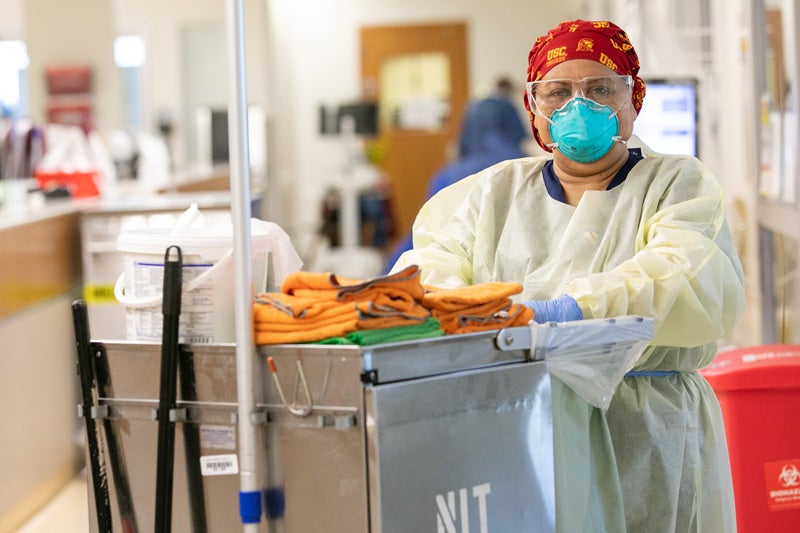
The Pioneering Engineer
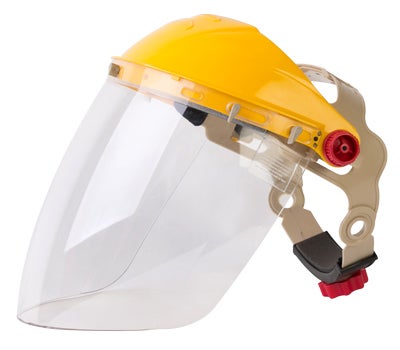
In her lab, Andrea Armani and her research team from the USC Viterbi School of Engineering often work with specialized equipment to develop advanced materials and optical devices. Their latest project, however, consisted of everyday tools. Working with the Keck School of Medicine of USC, they built sanitation boxes that use powerful UV-C light, a dangerous part of the light spectrum, to sterilize medical equipment like face shields.
“Think of it as reimagining disinfection,” Armani says. “We’re using off-the-shelf items you can get at Lowe’s or home improvement stores to make a device that can kill bacteria and viruses.”
The Good Neighbors
Cucumbers, peppers, spinach, kiwis and other produce originally destined for USC restaurants ended up on tables for local families and older adults in need. Volunteers from USC and Weingart East Los Angeles YMCA led a food drive alongside many other community groups, distributing 1,000 bags in just the first week of the city’s stay-at-home order.
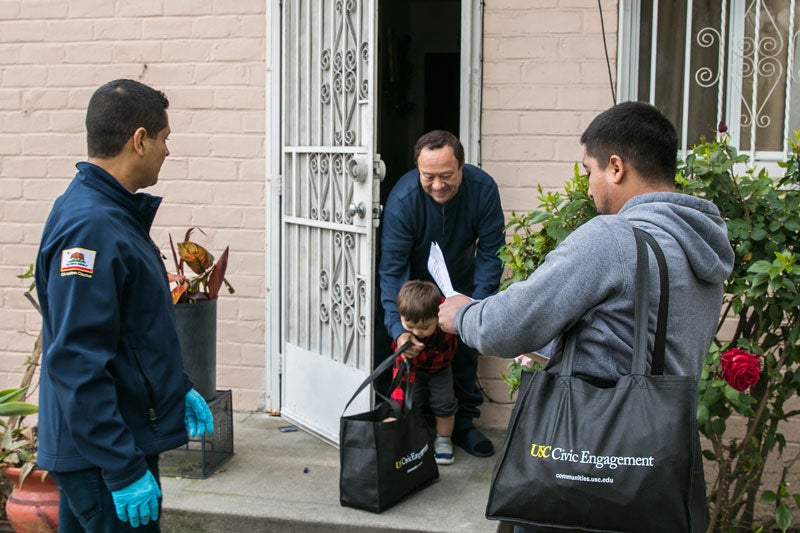
The Comforting Cooks
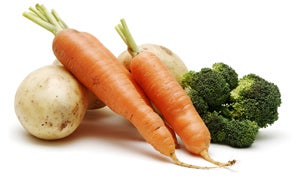
For hundreds of students unable to leave the University Park Campus during the pandemic, comfort came in the form of mac and cheese, rotisserie chicken and mashed potatoes. USC kitchen workers prepared more than 700 grab-and-go dishes every day. Besides following the kitchen’s usual food safety procedures, two dedicated staff members sanitized common areas every 15 minutes.
USC Hospitality also cooked about 8,000 meals a week to deliver to senior L.A. residents who had to stay home to avoid the virus.
The Dedicated Protectors
From phone dispatchers to patrol officers, some 300 USC Department of Public Safety staff members keep an eye out for remaining students, essential employees and neighbors around USC’s campuses. During the pandemic, these USC heroes teamed up with USC University Relations and the Los Angeles Police Department to distribute care packages of books, food and more to local families.
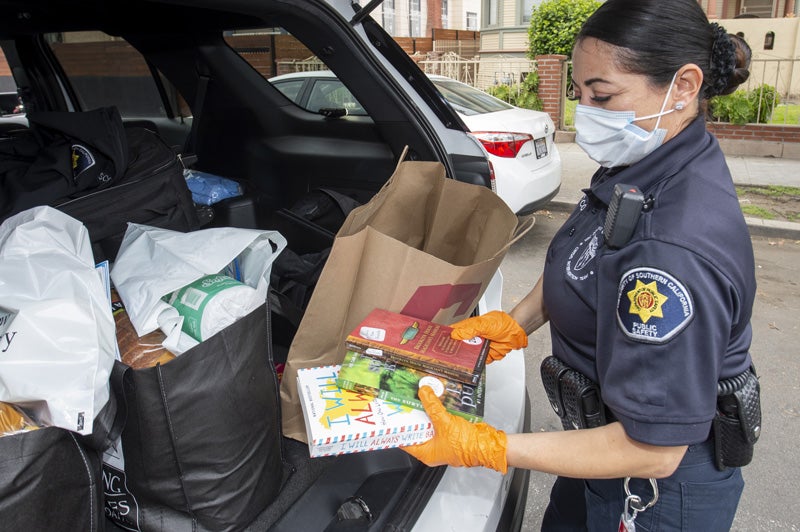
The Inventive Artist
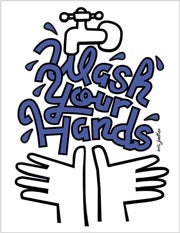
It was originally a playful reminder for restaurant workers. Now artist Eric Junker’s “Wash Your Hands” poster nudges everyone to do their part. To spread the handwashing message—and provide a fun activity during self-isolation—the USC Roski School of Art and Design lecturer created a downloadable version of his poster and coloring book, available on his website.
The Born Problem Solver
When challenges arise, MacKenzie McClung ’20 shifts into high gear. While isolating with her family in Jacksonville, Florida, the computer science and business administration double major wanted to do her part to help health workers.
“I’m a problem solver by nature, and right now the problem is protecting those who are saving us,” says McClung, a USC Spirit Leaders captain and co-director of the Women’s Leadership Society at USC Annenberg.
She contacted universities and art museums and tracked down thousands of critical medical supplies like gloves, masks and gowns to donate to hospitals in Jacksonville. McClung also connected with 3D-printing manufacturers to design low-cost parts for much-needed ventilators.
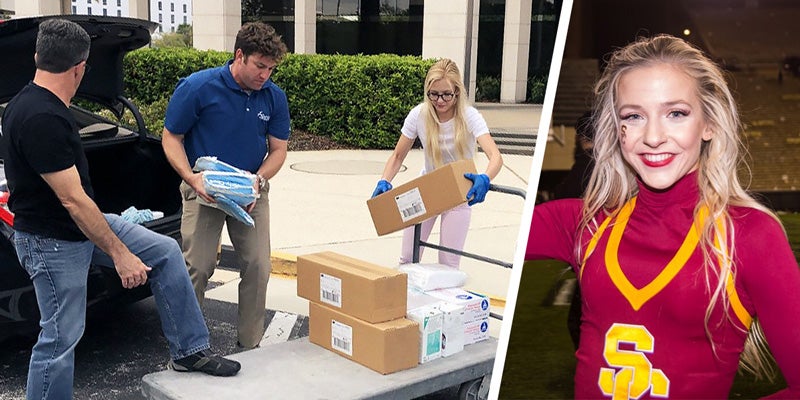
Caitlin Dawson, Saul Garcia, Ron Mackovich and Gary Polakovic contributed to this article.

